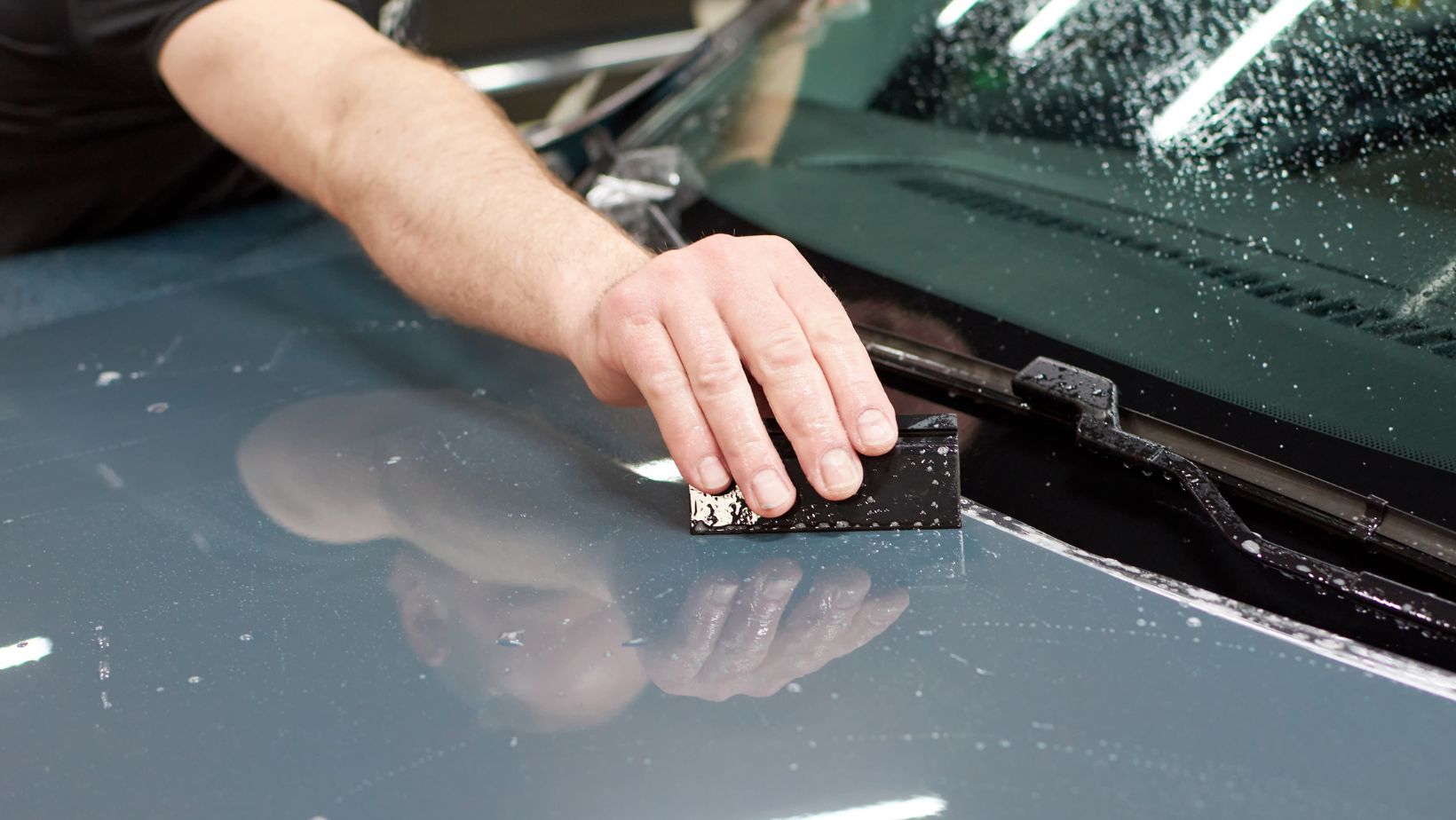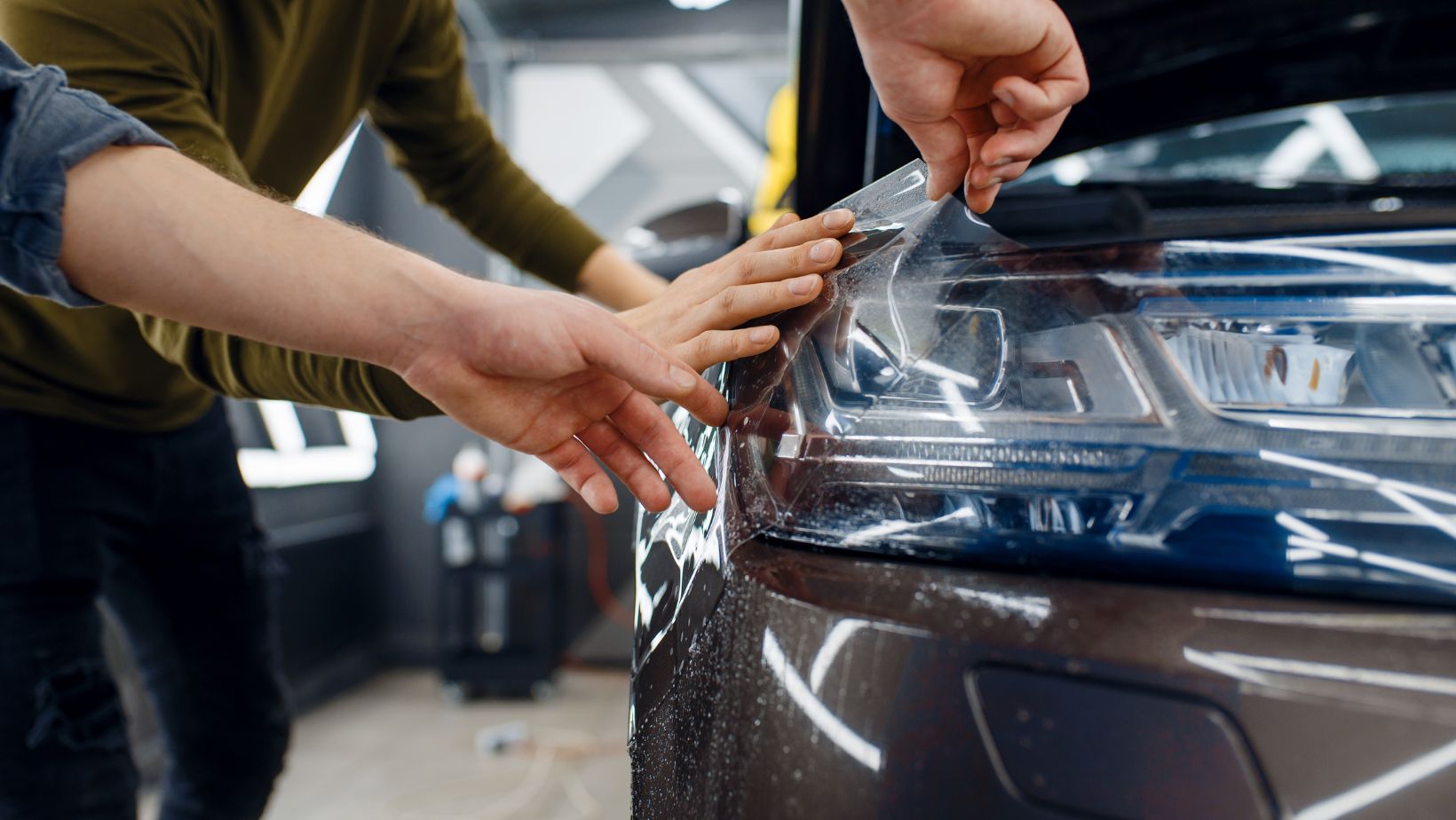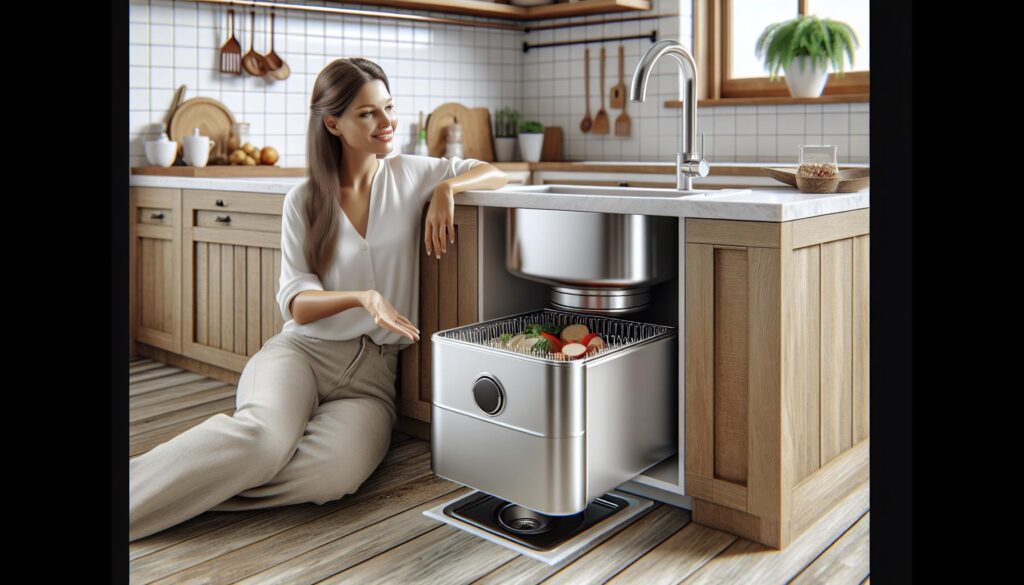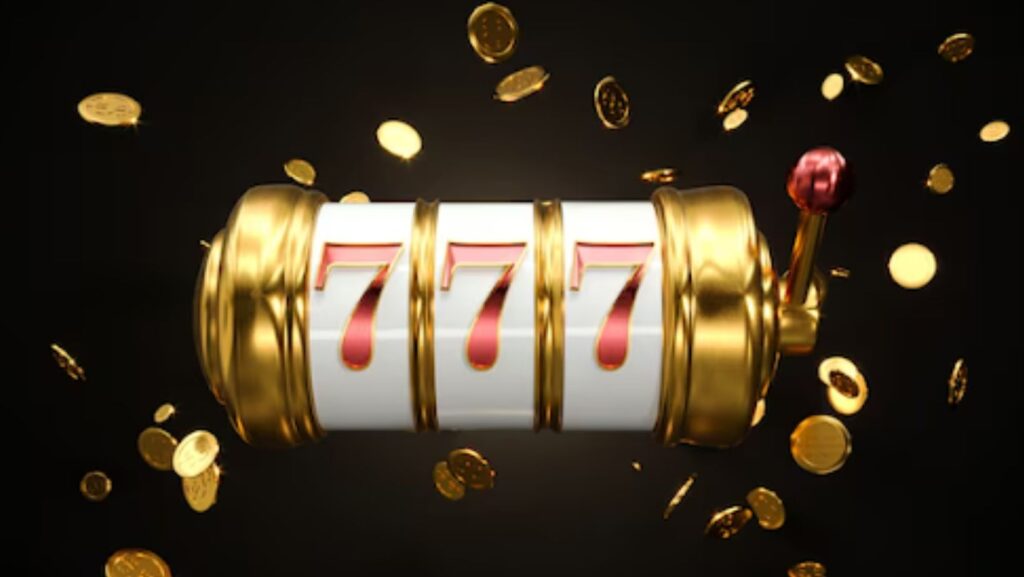
Paint protection film (PPF) has long been a go-to solution for vehicle owners seeking to protect their car’s exterior from damage caused by road debris, UV exposure, and daily wear. While clear PPF remains the standard choice for maintaining a factory look, colored PPF has emerged as a high-performance alternative that blends protective qualities with aesthetic transformation.
From concealing imperfections to enhancing visual appeal and supporting easier maintenance, colored PPF provides distinct advantages. This blog explores why more drivers are turning to colored PPF as a smarter, multifunctional solution.
Benefits of Colored PPF Over Clear PPF
Car owners looking at protection options for their vehicles should know that colored and clear PPF differ in more than just looks. People are finding that colored paint protection film brings better advantages than its see-through version. Let’s look at what makes this option appealing to those who want both safety and style.
Customization and Color Variety
Colored PPF’s biggest draw is its amazing range of customization options. Clear film just keeps your car’s existing look, but colored PPF changes it completely. You can pick from so many colors and finishes to create a look that matches your style.
Colored PPF comes in various finishes that add more customization possibilities:
- Glossy finishes create mirror-like reflections that highlight your car’s curves
- Matte options provide a sophisticated, modern appearance with no shine
- Satin finishes blend glossy and matte for a soft, elegant look
- Specialized effects including carbon fiber textures and chrome appearances

Some manufacturers offer pearlescent shades that change appearance based on viewing angle and light. Your car gets an eye-catching dimension that regular paint can’t match.
Camouflaging Minor Imperfections
Colored PPF also excels at hiding existing blemishes. Cars develop small scratches, stone chips, or paint imperfections over time, even with careful maintenance. Clear PPF protects against future damage but doesn’t hide existing flaws.
Colored film works as both protector and concealer. The opaque or tinted layer hides minor scratches and imperfections on your car’s surface. This makes colored PPF perfect for older vehicles or those showing wear and tear.
The film’s self-healing properties keep working after installation. Small surface scratches on the film disappear with heat exposure, which helps maintain a flawless look throughout its life.
Enhanced Visual Appeal
Colored PPF can boost your vehicle’s looks dramatically. The film adds depth to exterior surfaces and creates a premium look that catches eyes. Many car enthusiasts find this visual improvement worth the investment.
Satin or matte finishes create a sophisticated, modern look that’s trending in automotive design. These non-glossy finishes used to be hard and expensive with traditional paint but are now accessible through PPF.
The film’s UV-resistant properties prevent fading, so the color stays fresh and brilliant for years. This lasting quality offers better value compared to custom paint jobs that might wear down faster.
Colored PPF brings protection with personality. It mixes practical benefits with style advantages, letting car owners protect their investments while showing their unique taste.
Protection Features of Colored PPF
Colored paint protection film does more than look good – it acts like armor for your car’s paint. The film creates a barrier between your vehicle and the harsh outside world. Let’s get into these protective features.
Scratch and Chip Resistance
Protection remains the main goal of colored PPF. The film uses high-grade thermoplastic polyurethane (TPU) to create a resilient shield against daily hazards. This material absorbs impacts from road debris and prevents damage to the paint underneath.
The film spreads impact energy across its surface. This physics-based design cuts the risk of paint chips and scratches from rocks and road debris by up to 80%. The material stretches to absorb shocks without breaking or tearing.
Car owners dealing with gravel roads or construction zones find this protection particularly valuable. The film serves as a protective layer that takes damage instead of your vehicle’s finish.
UV Protection and Color Stability
The sun can slowly destroy automotive paint. The good news? Colored PPF blocks up to 99% of harmful ultraviolet rays. This UV protection stops oxidation and color fading that usually happens to unprotected vehicles.
Modern colored PPF contains UV inhibitors that keep colors bright for years. Unlike regular paint that fades after a few years in the sun, quality colored films stay vibrant throughout their life.
Self-Healing Technology
Modern colored PPF’s most impressive trick is its self-healing ability. Small scratches and swirl marks vanish when heat hits the film. This works through a special layer of elastomeric polymers that bounce back to their original shape when warm.
The film heals itself through several methods:
- Natural sunlight exposure (3-4 hours on a hot day)
- Application of warm water to the scratched area
- Gentle heating with a heat gun
Your vehicle stays looking fresh with minimal upkeep thanks to this regenerative power. Heat makes the film’s molecular structure reshape itself, which erases small marks. This self-healing works just as well on satin or matte finishes.
The real-life benefits are clear. Those frustrating car wash swirl marks and light scratches from branches simply disappear. Industry reports show self-healing PPF can recover up to 90% of its original appearance, based on environment and care.
Installation Process and Professional Considerations
A stunning colored PPF finish depends on professional installation. The right application techniques and specialized knowledge can substantially change how your investment looks and lasts.
Why Professional Installation Matters
Colored PPF installation demands specialized training and hands-on experience. Professionals know how to work with different vehicle surfaces and direct complex contours with precision. This expertise comes from working with vehicles of all types and various film materials.
Professional installers use specialized tools made just for PPF application. These tools help cut and shape the film to create a smooth fit that DIY installations can’t achieve. Think of it like a tailored suit versus one from the rack – both work, but one fits perfectly.
Here’s something to remember: quality installation creates stronger adhesion and smoother curing. When applied poorly, the film might not bond well with the surface and could develop air bubbles or lifted edges. Small mistakes during installation often become permanent visual defects.
Surface Preparation and Tools Used
Successful colored PPF installation starts with proper surface preparation. Everything begins with deep cleaning that removes dirt, dust, and contaminants that might affect adhesion. Clean surfaces help the film bond well and create that nearly invisible finish everyone wants.
Professional colored PPF installers rely on these tools:
- Specialized squeegees and cutting tools
- Application fluids and gels
- Paint protection film installation gel
- Disposable syringes and microfiber cloths
- Professional-grade cleaning materials
Some films need application foam to help spot residue under the film during installation.
Time and Environment Requirements
Full vehicle colored PPF application takes 5–7 days for professional installers. This investment of time ensures a flawless finish, which matters even more with colored PPF, since imperfections show up more than with clear film.
Temperature control plays a vital part in the application process. Professional shops keep temperatures between 70°F to 79°F (21°C to 26°C) for the best adhesion. The film should stay stored and installed within 15°-32°C (60°-90°F) to maintain flexibility and proper adhesive tack.
The curing period after installation becomes crucial. The film needs 24-48 hours to settle and bond properly. During this time, avoid driving in rain, heavy dust, or extreme heat. This waiting period lets the adhesive set correctly and creates a seamless barrier against environmental damage.
Conclusion
As car owners continue to seek out solutions that offer both performance and personality, colored paint protection film has proven itself as a comprehensive option. It delivers robust protection against common hazards while introducing opportunities for customization that go beyond traditional clear films.
With the ability to camouflage existing flaws, offer unique textures and colors, and support long-term durability through self-healing and UV resistance, colored PPF stands as a strong investment for both new and older vehicles.




